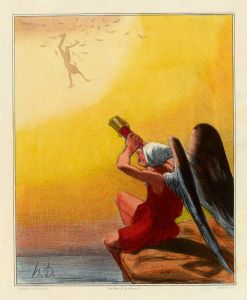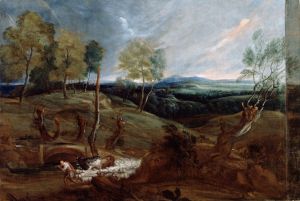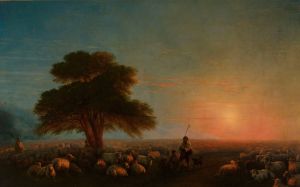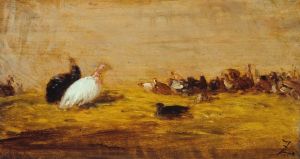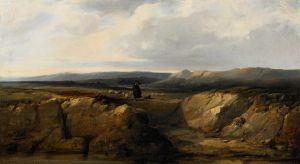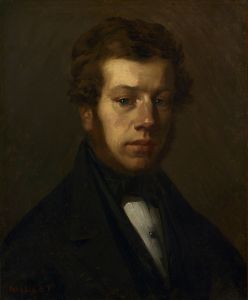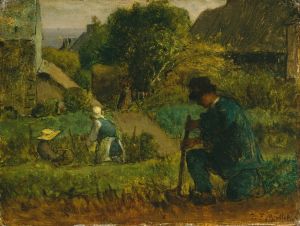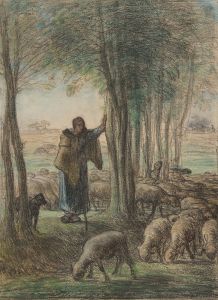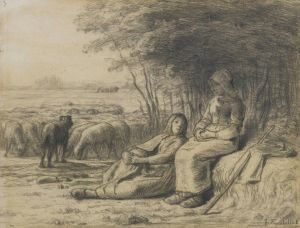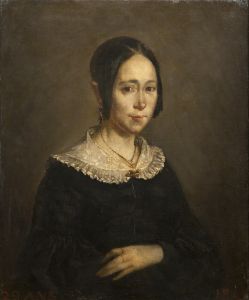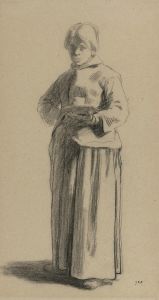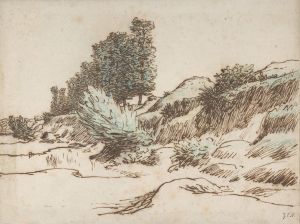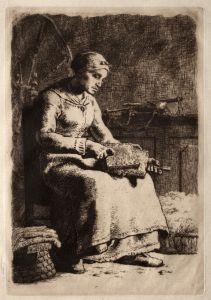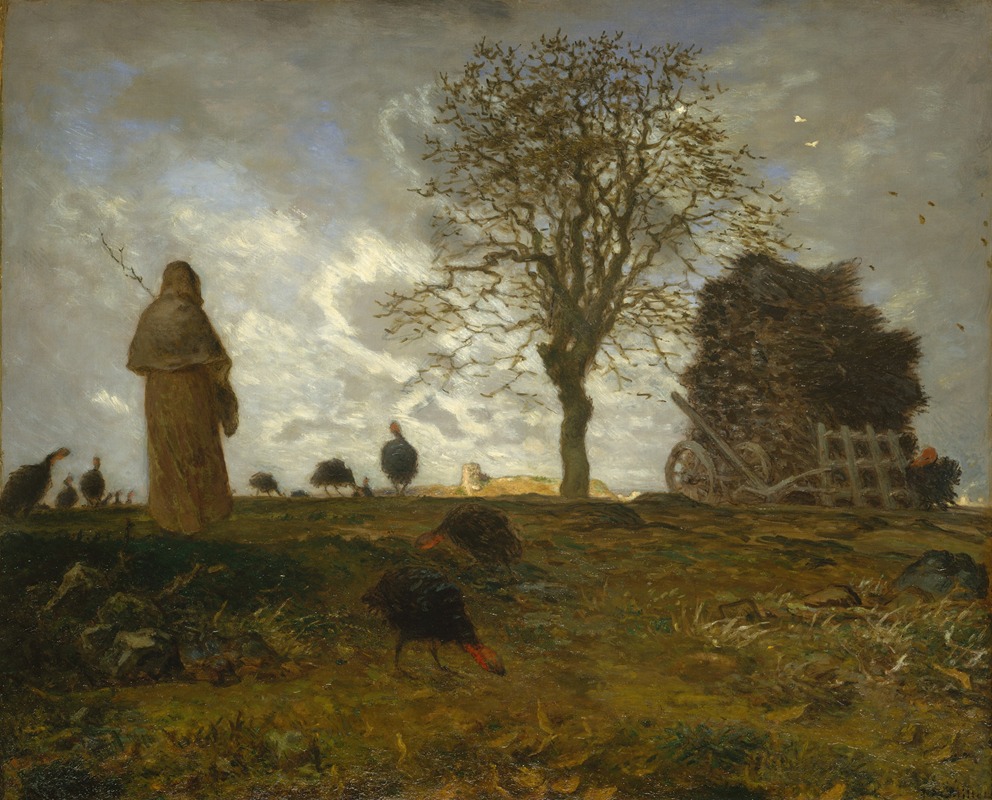
Autumn Landscape with a Flock of Turkeys
A hand-painted replica of Jean-François Millet’s masterpiece Autumn Landscape with a Flock of Turkeys, meticulously crafted by professional artists to capture the true essence of the original. Each piece is created with museum-quality canvas and rare mineral pigments, carefully painted by experienced artists with delicate brushstrokes and rich, layered colors to perfectly recreate the texture of the original artwork. Unlike machine-printed reproductions, this hand-painted version brings the painting to life, infused with the artist’s emotions and skill in every stroke. Whether for personal collection or home decoration, it instantly elevates the artistic atmosphere of any space.
"Autumn Landscape with a Flock of Turkeys" is a painting by the renowned French artist Jean-François Millet, who is best known for his depictions of peasant life and rural landscapes. Millet was a prominent figure in the Barbizon School, a movement that emerged in the mid-19th century and focused on realism and naturalism in art, often highlighting the beauty and simplicity of rural scenes.
This particular painting, "Autumn Landscape with a Flock of Turkeys," exemplifies Millet's ability to capture the essence of rural life and the changing seasons. The painting depicts a serene autumnal scene, characterized by a flock of turkeys wandering through a landscape that is rich in the warm hues of fall. The composition reflects Millet's keen observation of nature and his skill in portraying the subtleties of light and color that define the season.
Millet's work often emphasized the connection between humans and nature, and this painting is no exception. The turkeys, a common sight in rural France during the autumn months, are depicted in a naturalistic manner, suggesting a harmonious coexistence with their environment. The landscape itself is rendered with a sense of tranquility and balance, inviting viewers to appreciate the quiet beauty of the countryside.
Born in 1814 in the village of Gruchy, Normandy, Millet grew up in a farming community, which greatly influenced his artistic vision. His upbringing instilled in him a deep respect for the land and those who worked it, themes that would permeate much of his work. After studying art in Cherbourg and Paris, Millet eventually settled in Barbizon, a village near the Forest of Fontainebleau, where he became a central figure in the Barbizon School.
Millet's approach to painting was characterized by a focus on realism and a dedication to depicting the lives of ordinary people. He often chose subjects that highlighted the dignity and resilience of rural laborers, and his work resonated with audiences who appreciated his honest and empathetic portrayals. "Autumn Landscape with a Flock of Turkeys" fits within this broader context of Millet's oeuvre, showcasing his ability to find beauty in the everyday and to elevate simple scenes to the level of fine art.
Throughout his career, Millet faced both praise and criticism for his work. While some contemporaries admired his commitment to realism and his skillful technique, others criticized his choice of subject matter, which they deemed too mundane or lacking in idealism. Despite this, Millet's influence on later generations of artists is undeniable, with his work paving the way for movements such as Impressionism and influencing artists like Vincent van Gogh.
"Autumn Landscape with a Flock of Turkeys" remains an important example of Millet's contribution to 19th-century art, reflecting his mastery of landscape painting and his deep connection to the rural world. The painting continues to be appreciated for its aesthetic qualities and its ability to convey the quiet beauty of the natural world, a testament to Millet's enduring legacy as a painter of rural life.





